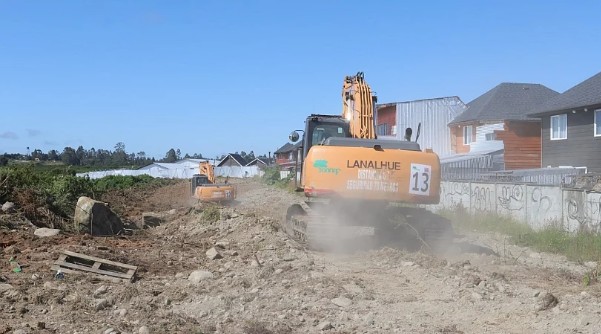Genome of the Araucaria Sequenced, Eight Times Larger Than That of Humans
- The University of Concepción and CMPC led the effort to obtain the genome of this natural monument that coexisted with dinosaurs. This information will help make it more resilient against pests or climate change. A joint effort between academia and the private sector.
Obtaining the giant reference genome of the majestic araucaria is as monumental as the tree itself, which grows in the south. This is because its genome is eight times larger than that of humans.
To achieve this, several research teams not only used cutting-edge technology but also had to climb these ancient trees to find the best part for extracting genetic material. And they succeeded.
Tomorrow, at a ceremony in Yumbel, the genetic sequencing of this tree—considered a national scientific milestone—will be announced. The project, which began in 2022, was made possible through a collaboration between the University of Concepción, CMPC, and the University of Valencia in Spain.
This is a crucial step toward establishing a reference genome for the species, enabling studies of its genetics, understanding its evolution and adaptation, and finding ways to combat pests or develop optimal conservation strategies.
"Reference genomes and genomic data improve monitoring, conservation, and biodiversity restoration strategies, making these projects more effective in the long term," explains Verónica Emhart, Submanager of Genetics and Biotechnology at Forestal Mininco (CMPC).
Before sequencing, however, they had to obtain a sample with optimal genetic material. They tried the fruit, the pine nut. "We thought it was the ideal material, but it didn’t work. Then we tried the needles (the prickly leaves), and that didn’t work either. Until something magical happened. Jaime Espejo from CMPC climbed a tree with a rope and found an epicormic shoot. Imagine a two-meter branch concentrated in a one-centimeter shoot ready to grow," says Hasbún. That was the material they used, extracted from a specimen in Villa Las Araucarias, in the Nahuelbuta mountain range.
Three Steps
"Publishing a reference genome has three parts: sequencing, assembling, and annotating that genome," explains Rodrigo Hasbún, Director of the Plant Genetics Laboratory at the University of Concepción, who led the scientific side of this project.
Hasbún explains it simply: "It’s like a big book where the pages fly away, and you have to put it back together." Sequencing is collecting the loose pages, reading, and scanning them. The second step, assembly, is like reassembling the book so it makes sense. The third step, annotation, is akin to numbering the pages, creating an index, and making it available for anyone to browse.
The sequencing work was outsourced to specialists at the University of Wisconsin (USA), who have cutting-edge equipment and, above all, experience in this task.
The key to modern sequencing technology is that it can obtain initial fragments of 15,000 bases, making the assembly process easier. "Before, we could only get fragments of 500 bases, which is like assembling a puzzle with many more and much smaller pieces—taking far longer. Sequencing the human genome took 13 years, and now it can be done in a day," clarifies the scientist from the University of Concepción.
Continuing the book analogy, the araucaria sequencing has already built a book with 91,000 chapters or parts. "By assembling them, we can determine the chromosomes. We estimate the araucaria has 12 chromosome pairs, each with about 2 billion bases," explains Hasbún.
"The araucaria has a mega-genome—an extremely large genome, eight times bigger than humans'," notes Tomás Matus, a Chilean researcher at the Institute of Integrative Systems Biology in Valencia (Spain), who specializes in creating genomic resources for plant species and also participated in this project.
This is because the araucaria belongs to the conifer group. "They are very ancient organisms, true living fossils that have been on Earth for a long time and coexisted with dinosaurs. Their genome has undergone many changes and become increasingly complex," explains Hasbún. The team led by Matus continues assembling the sequences of this massive puzzle and annotating the genes within this genome.
Additionally, his team provided the storage system for the araucaria’s genomic data and made it publicly available as a database for the scientific community (at h t t p : / / p l a n t a e v i z. t o m s b i o lab. com:8001/easy_gdb/).
"The genome information and tools from genomics help understand the diversity of individuals in this species based on their genetics," says Matus, adding that conservation programs can make decisions using this data. Meanwhile, understanding genetics at a molecular level "can help explain developmental processes like reproduction, resistance to climate change, or pests."
"This is a concrete example of a private company and universities coming together to solve a problem related to an emblematic species," says Emhart. "We’ve learned from working with the araucaria and can now consider working on other threatened species, like the ruil or pitao," she adds.
Source: subscription edition ofEl Mercurio

















